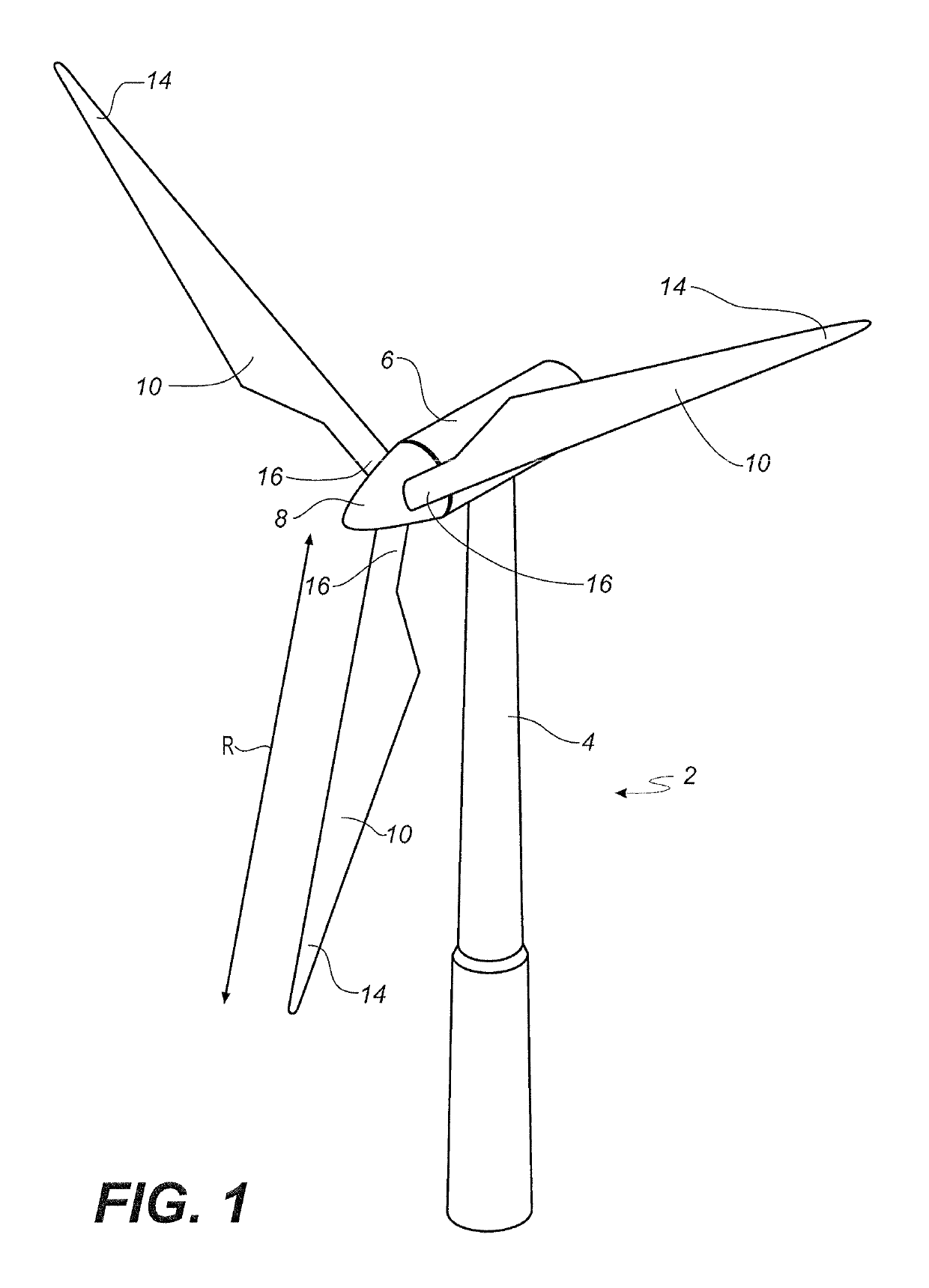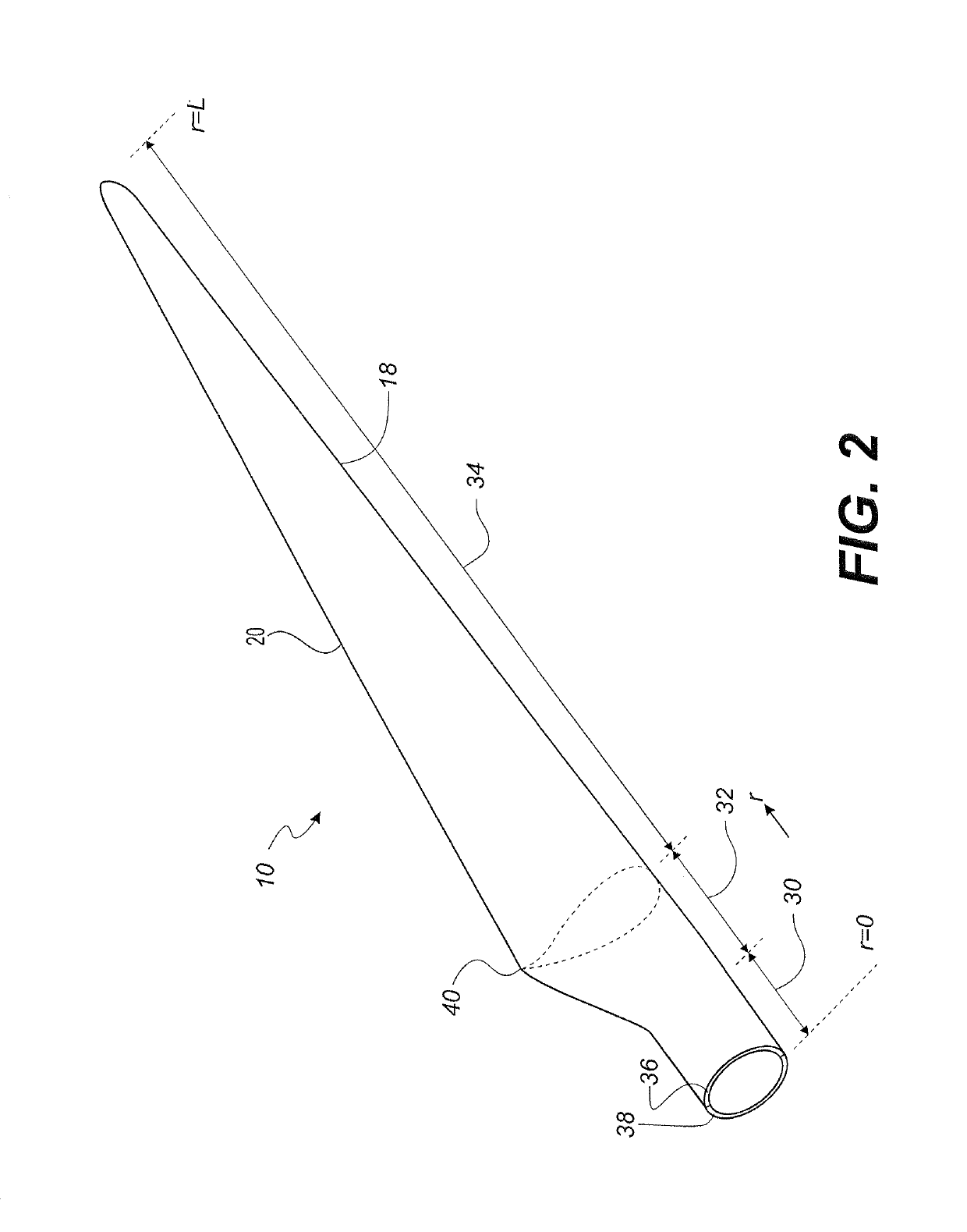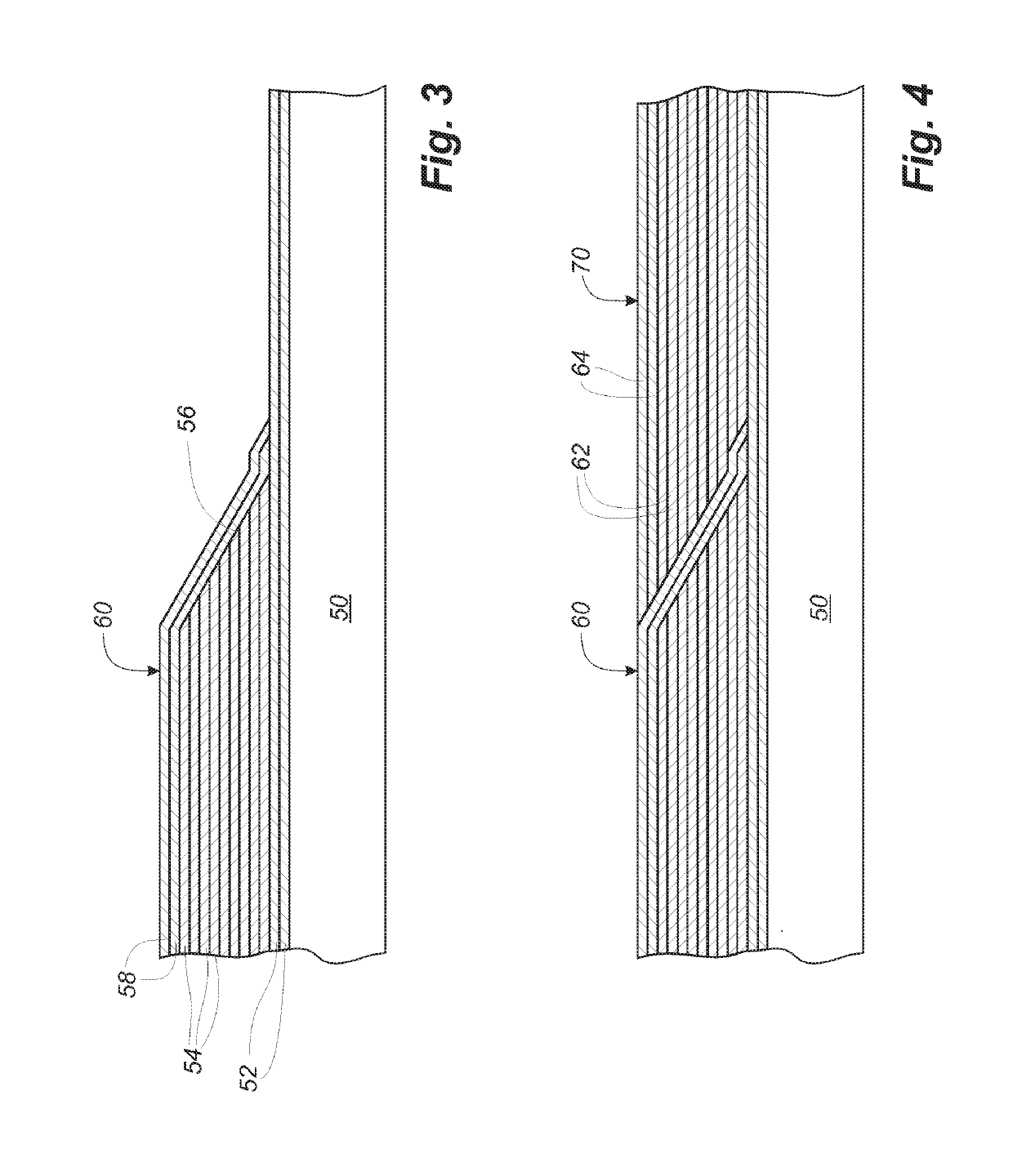Wind turbine blade with improved fibre transition
a technology of fibre transition and wind turbine blade, which is applied in the field of wind turbine blade with improved fibre transition, can solve the problems of air pockets, difficult or impossible to remove, and ensure the complete distribution of polymer in the entire mould cavity, so as to improve mechanical bonding and increase bonding
- Summary
- Abstract
- Description
- Claims
- Application Information
AI Technical Summary
Benefits of technology
Problems solved by technology
Method used
Image
Examples
Embodiment Construction
[0092]Embodiments of the invention are described below, by way of example, with reference to the accompanying drawings, in which:
[0093]FIG. 1 shows a wind turbine,
[0094]FIG. 2 shows a schematic view of a wind turbine blade according to the invention,
[0095]FIG. 3 shows the layup of fibre material for forming a cured blade element,
[0096]FIG. 4 shows the layup of fibre material for forming an integrated reinforced section on the cured blade element of FIG. 3,
[0097]FIG. 5 shows a cross section of the cured blade element and integrated reinforced section,
[0098]FIG. 6 shows a schematic view of a blade shell part comprising the cured blade element and integrated reinforced section,
[0099]FIG. 7 shows a schematic view of a the fibre layup of a first thickness section of a blade component,
[0100]FIG. 8 shows a schematic view of a the fibre layup of a second thickness section of a blade component, and
[0101]FIGS. 9a-d show different variations of embodiments according to the invention.
[0102]FIG....
PUM
| Property | Measurement | Unit |
|---|---|---|
| length | aaaaa | aaaaa |
| length | aaaaa | aaaaa |
| elastic modulus | aaaaa | aaaaa |
Abstract
Description
Claims
Application Information
 Login to View More
Login to View More - R&D Engineer
- R&D Manager
- IP Professional
- Industry Leading Data Capabilities
- Powerful AI technology
- Patent DNA Extraction
Browse by: Latest US Patents, China's latest patents, Technical Efficacy Thesaurus, Application Domain, Technology Topic, Popular Technical Reports.
© 2024 PatSnap. All rights reserved.Legal|Privacy policy|Modern Slavery Act Transparency Statement|Sitemap|About US| Contact US: help@patsnap.com










